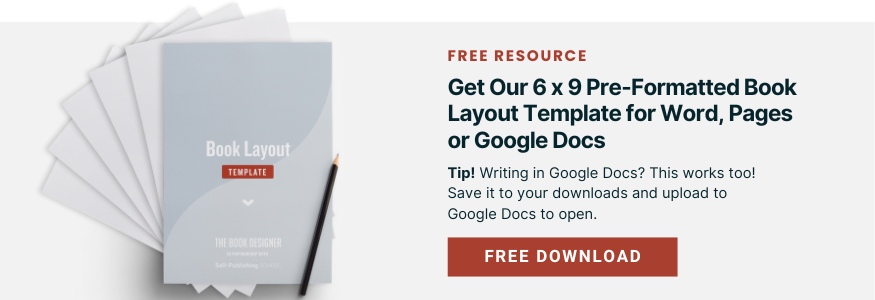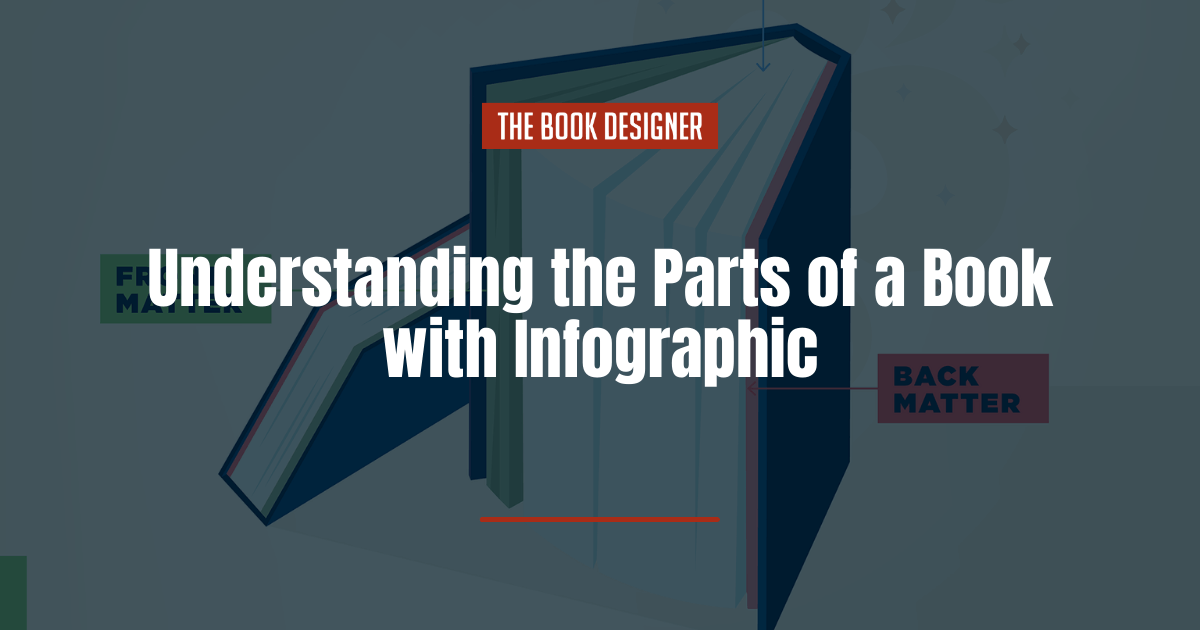Understanding the different parts of a book and what order they go in is essential for any aspiring author who’s looking to self-publish their work. In this article, we’ll break down the key components that make up a book, guiding you through each section’s purpose and significance. Be sure to check out the infographic that breaks down all the parts of a book in greater detail!
In this article and infographic about the parts of a book, we’ll cover:
Title Page and Copyright Page
The title page is located at the very beginning of a book. It includes the book’s title, subtitle (if applicable), author’s name, and sometimes the publisher’s logo. In most books, immediately following the title page, you’ll find the copyright page, which includes copyright information, publication details, ISBN, and legal disclaimers.
Table of Contents
The table of contents provides readers with an overview of the book’s structure (i.e., all of the parts of a book). It lists the chapters, sections, and other important segments along with their page numbers. A well-organized table of contents helps readers navigate the content easily. Virtually all nonfiction books contain a table of contents, but it’s less common in fiction.

Foreword, Preface, and Introduction (or Prologue)
These initial sections set the stage for the book. The foreword, often written by someone other than the author, offers insight into the book’s significance. The preface, authored by the writer, explains the book’s purpose and how it came to be. The introduction outlines what readers can expect and why the topic matters.
Not every book contains all three of these parts. For example, an introduction is often a characteristic of nonfiction but less common in fiction—fiction often includes a Prologue instead. A prologue is usually backstory that is important for understanding a novel or offers key insights into an event that happened before the current story but shaped it, or its characters, in some way.
Body of the Book
The body contains the main content of the book. In a non-fiction work, this is where you present your ideas, arguments, research, and insights. For a novel, the body carries the plot, characters, and storyline. Each chapter or section should flow logically, guiding the reader through the narrative or information. It also contains the conclusion or epilogue.
Conclusion (or Epilogue)
The conclusion wraps up the main points or storylines, offering closure to the reader. In non-fiction, it may summarize key takeaways or suggest further steps. In fiction, it resolves the central conflicts and provides a sense of resolution. In fiction, it might also be called an Epilogue.
Afterword
The afterword of a book may be written by the author or someone else. It’s purpose is to put the work in some sort of greater context. Alternatively, it may discuss the origin of the work, if that’s important or interesting information to convey.
Appendices
Appendices are supplementary materials that provide additional information. This might include charts, graphs, data tables, or any content that supports the main text. Appendices should be referenced within the main content when relevant.
Glossary
If your book includes specialized terminology, a glossary is valuable. It’s a list of key terms and their definitions, helping readers understand and engage with your content more effectively.
Index
An index is a list of keywords and topics along with the page numbers where they appear. It’s a valuable tool for readers who want to quickly find specific information within the book.
Acknowledgments and About the Author
In the acknowledgments section, authors express gratitude to individuals or organizations that contributed to the book’s creation. The “About the Author” section provides a brief bio, giving readers insight into the writer’s background and expertise.
Back Cover and Endorsements
The back cover includes a book summary, author’s bio, and endorsements or reviews. This section is crucial for attracting potential readers and convincing them to pick up the book.
Formatting and Design
While not a separate section, formatting and design are essential for a reader-friendly experience. Consider font choices, spacing, headings, and images that align with the book’s tone and content.
Parts of a Book Infographic
Check out the infographic below for a more detailed breakdown of the sections of a book and where you’ll likely find them:

Share this Infographic On Your Site
Copy and paste the code below to embed this infographic on your website. Be sure to credit TheBookDesigner.com when sharing!
By understanding the various sections of a book, you can create a well-structured and engaging self-published work. Remember, each section plays a role in guiding the reader, providing information, and enhancing their overall experience. As you embark on your self-publishing journey, use this knowledge to craft a book that not only showcases your content but also reflects your commitment to clear and concise communication.



